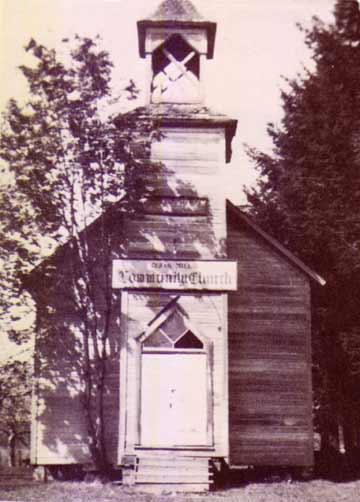 |
Previous Issues |
| Cedar Mill Community Website |
|
| About Cedar Mill News |
|
||||||
| Volume 5, Issue 1 | January
2007
|
|||||
History in the News
|
 |
| The second Wesley Chapel, built in 1891, was located on Cornell west of Murray, and lasted until 1965 |
It is interesting to note that Wesley Chapel served the Cedar Mill citizens until the Owen Murray family purchased the land where the building stood. For some reason the Catholic Murray’s relationship with the Methodists soured and in 1891, the Methodists were asked to vacate the premises. JQA Young’s son Jasper donated some land on Cornell Road just east of the original building and a new chapel was built. This second Wesley Chapel served the community for over 40 years. After that it stood vacant for a number of years, life swirling and growing around it where it shared space with an advertising board and tall grass. I remember seeing it when we moved here in 1964. It was demolished in 1965.
William Cornell eventually moved to Salem where he became involved in the growth of Willamette University. He is buried in that city.
Cedar Mill Business Association
Published monthly by Cedar Mill Advertising & Design
Publisher/Editor:Virginia
Bruce
503-629-5799
12110 NW West Rd
Portland, OR 97229